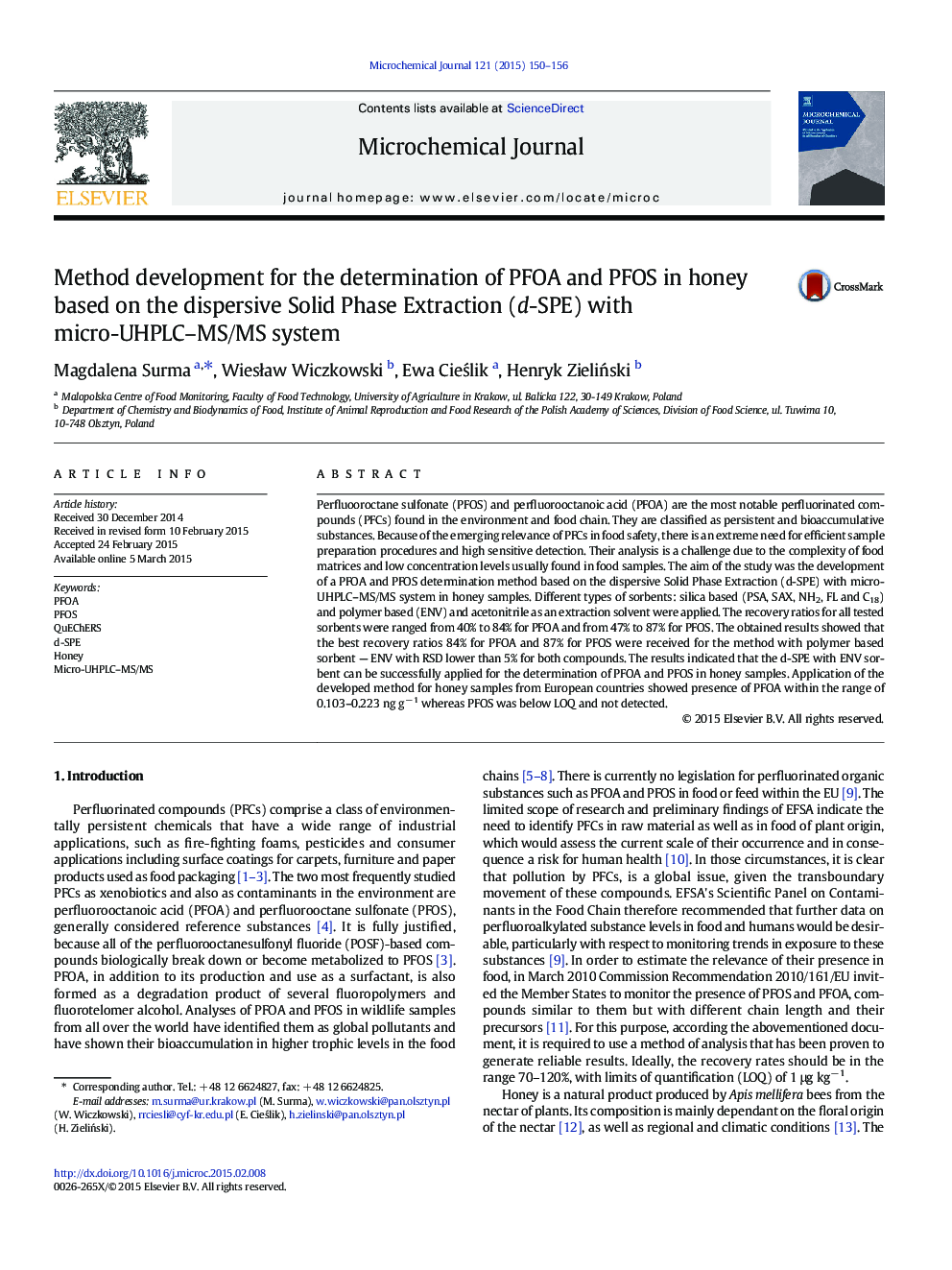| کد مقاله | کد نشریه | سال انتشار | مقاله انگلیسی | نسخه تمام متن |
|---|---|---|---|---|
| 1227689 | 1494873 | 2015 | 7 صفحه PDF | دانلود رایگان |

• Flower honey contains PFOS and PFOA.
• Extraction with polymer based sorbent — ENV offers the best recovery.
• Dispersive Solid Phase Extraction (d-SPE) and micro-UHPLC–MS/MS detection is recommended.
Perfluooroctane sulfonate (PFOS) and perfluorooctanoic acid (PFOA) are the most notable perfluorinated compounds (PFCs) found in the environment and food chain. They are classified as persistent and bioaccumulative substances. Because of the emerging relevance of PFCs in food safety, there is an extreme need for efficient sample preparation procedures and high sensitive detection. Their analysis is a challenge due to the complexity of food matrices and low concentration levels usually found in food samples. The aim of the study was the development of a PFOA and PFOS determination method based on the dispersive Solid Phase Extraction (d-SPE) with micro-UHPLC–MS/MS system in honey samples. Different types of sorbents: silica based (PSA, SAX, NH2, FL and C18) and polymer based (ENV) and acetonitrile as an extraction solvent were applied. The recovery ratios for all tested sorbents were ranged from 40% to 84% for PFOA and from 47% to 87% for PFOS. The obtained results showed that the best recovery ratios 84% for PFOA and 87% for PFOS were received for the method with polymer based sorbent — ENV with RSD lower than 5% for both compounds. The results indicated that the d-SPE with ENV sorbent can be successfully applied for the determination of PFOA and PFOS in honey samples. Application of the developed method for honey samples from European countries showed presence of PFOA within the range of 0.103–0.223 ng g− 1 whereas PFOS was below LOQ and not detected.
Journal: Microchemical Journal - Volume 121, July 2015, Pages 150–156